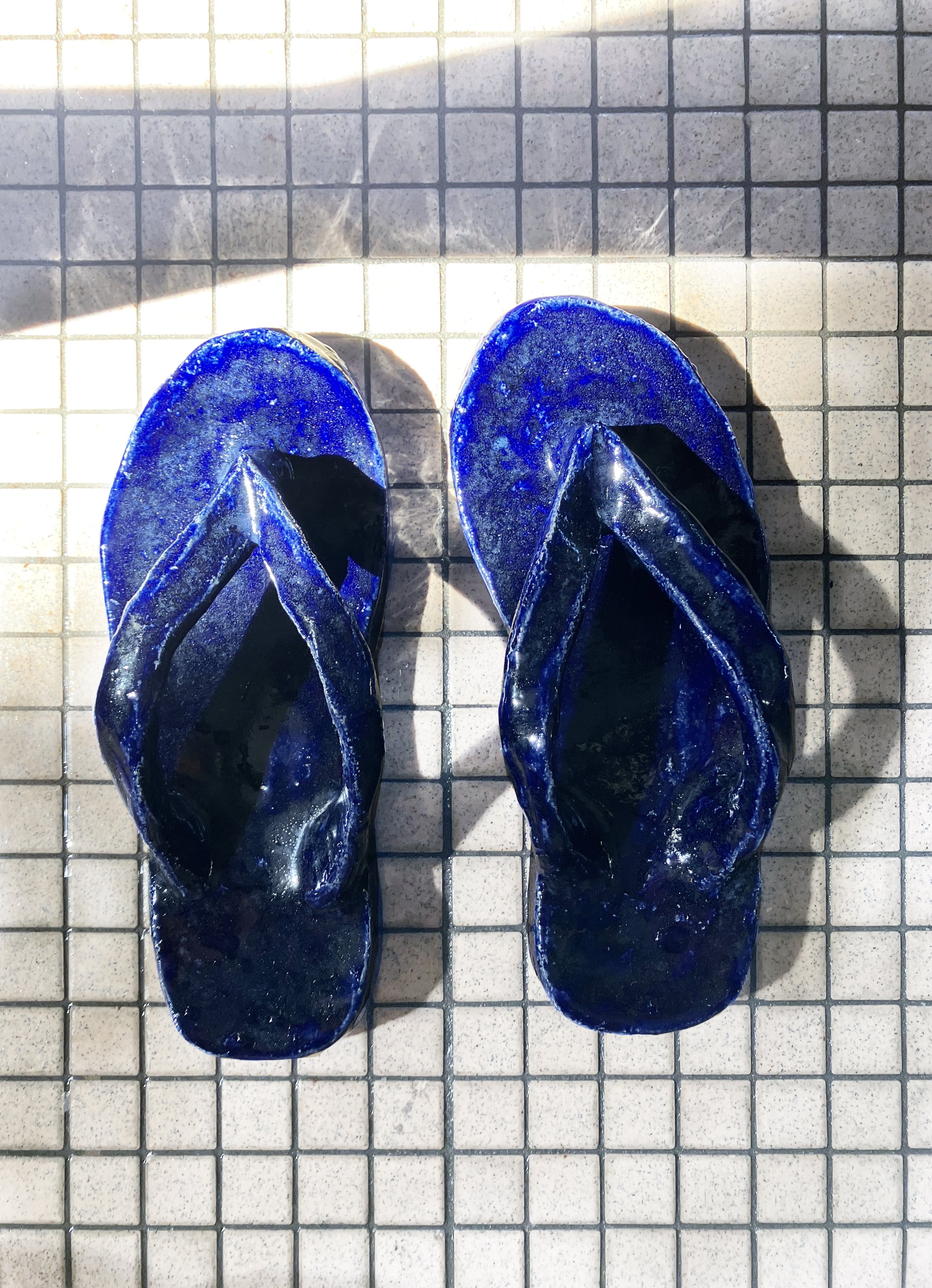c.j. chueca
CURATED by Blanca de la Torre
MERMAIDS IN THE BASEMENT
The original mermaids were half bird, half woman. The first written source where they appear is in Homer's Odyssey, in Book XII, where Ulysses, on his return home after the Trojan War, manages to avoid the attraction of their songs by forcing himself to be tied to the mast of his ship and the ears of his crew to be plugged with wax. The scene has been portrayed on numerous occasions in the History of Greek and Roman Art, through paintings, ceramics, and friezes, as well as mosaics.
From the multiple versions of the origin of mermaids, Chueca focuses on Persephone, daughter of Zeus and Demeter, and kidnapped by Hades, god from the underworld. To save her, her friends ask Zeus for wings to chase after the captor god, and this legendary figure changed feathers for the fishtail.
The mermaid protagonists of Chueca's work are women from disparate places who sing stories about dispossession and lost land. The first of this series was recorded in Honduras, a country most vulnerable to the climate emergency (the cause of emigration, after violence and hunger). It was made for the exhibition The Sound of Sinking Voices, in Tegucigalpa. The exhibition centered on the dramatic situation of Cedeño, a village in the south where the ocean advances up to 1.22 meters inland every year, devouring homes, and businesses. Blanca Azucena Guevara Bonilla leads a powerful call of lament and longing. She is joined by the songs of a Filipino woman, a Saharawi, a Californian actress, a woman from Nashville, and others from Mexico, Sudan, Ghana, and Peru, from where her family was forced to abandon due to overflowing rivers in the Sierra de Jauja.
The mosaic technique takes center stage in the exhibition, whose origins can be found in ancient Greece, with numerous examples found in archaeological sites of the Hellenistic time. In preparation, papyrus templates were made into grids and drawings as with the canvases that cover the walls here. In Chueca’s room, she has painted them like tiles. Many of these Greek mosaics come from Delos, where we can also find marine motifs, mythological beings, and wave patterns, a very common motif at that time.
The word mosaic comes from the Latin musivus -a -um, originating in Greek with the muses. The title of the exhibition is derived from a poem by Emily Dickinson, an American Poet who explored aesthetics, spirituality, and nature:
I started Early – Took my Dog –And visited the Sea –
The Mermaids in the Basement –Came out to look at me
It also suggests a displacement from a natural place (the sea or any of our own ecosystems) to one less so urban environment (basement). In this metaphorical space created by the artist are different works that make up the exhibition, intertwining to be an immersive installation, with titles from poems related to water. The Water Understands is the first line from a verse by Waldo Emerson:
The water understands- Civilization well- It wets
my foot, but pretty- It chills my life, but wittily
It is the title to a sculpture consisting of two flip-flops resting on a pool ladder, together with another pair abandoned in the back of the room. Water is the main ingredient of the ceramic technique with which it is made, connecting the natural space, on this occasion the beach, with an urban pool.
Ceramic tiled walls have been a constant in the work of C.J. Chueca, always paying homage to the dispossessed, marginalized, and excluded. For the artist, the walls have a typical quality, also evoking gestures of looking at the walls and the roof of the pool in the act of swimming, being submerged, and floating in the water. Like the feeling of returning to the mother's womb, the metaphor of the possibility of a return, and longing for the land from where we came. Note the dimensions of the painted tiles correspond to those that cover New York City subway stations, a disturbing familiarity with the daily life of the city.
The ceramics created for this exhibition, and the thousands of square pieces drawn here are handmade, line by line, in sequences that go from day to night and night to day. Chueca has used pigments from her native country, such as Peruvian turquoise. This importance given to artisan processes is another means of addressing losses of collective memory.
Another classical poet, William Butler Yeats, gives the title to the structure located in the center of the room:
To an Isle in the Water
And shy as a rabbit-
Helpful and shy- To an isle in the water-
With her would I fly.
The double H-shaped sculpture is built with two lines of an Olympic pool put together and configured as an island. Chueca has conceived the size so that any person can fit inside with arms and legs stretched out, to allude to the idea of body-territory and the body as an island.
Similar to the climatic displacements of the Honduran village, the Philippine song takes us to an island impacted by the ecological emergency. Some of the songs come from popular orality, accounting for the recovery of ancestral cosmogonies and knowledge. The decolonial component is also glimpsed with the use of the tiles, which remains in the collective imagination as part of the colonial heritage of the Abya Yala territories (Latin America), and which leads to a review of the role of colonialism in the ecological emergency and the concept of climate debt to countries of the Global South.
The story of the climate crisis is the story of systems of oppression, of a scale of environmental justice that was never balanced. Water as poetics, water as politics. Chueca transports us to a space of metaphors where the speculative is traversed by a moment when the UN has just announced the impossibility of saving the glaciers in the future. They will melt day by day as do our hopes about the possibility of a de-carbonized tomorrow. We need, more than ever, to join forces and build a new territory for the commons, from all fronts and disciplines, to build a valid narrative of repair, resilience, and transformation.
ARTIST’S AND CURATOR’S WATER STATEMENTS
C.J. Chueca
Since 2015 she has named herself C.J. Chueca, an abbreviation of Cecilia Jurado Chueca, which began a new journey in her artistic practice. She had been a nomadic since she was born. In her first years of life she lived in Mexico City and Oaxaca, followed by different houses in Lima, the capital of Perú. Her father migrated to Lima from a small town called Muquiyauyo-Jauja located in the high mountains of the Andes. Her mother's father was an orphan who traveled on a warship and eventually found a putative father in Valparaiso, Chile. Her history, the history of her family of perpetual immigrants, as the history of many residents of New York City, has led her to explore the concepts of home, territory, transition, multiculturality, uprooting, and solitude. C.J. Chueca creates walls that neither contain nor separate. Instead, they provide insight into the complex ways that walls operate in our lives. Chueca moved to New York in 2003.
The artist is mesmerized by the power of water, its never-ending ride, its possibility to pass through the smallest gap, and its condition of eternal traveler. We are water, as we are rivers that will eventually mix with other rivers in the deepest water of the ocean.
Blanca de la Torre
Blanca de la Torre is a Spanish curator, art historian, researcher, and ecofeminist whose professional work lies at the intersection of visual arts, political ecology, and sustainable creative practices. Her professional activity, which she has developed both inside and outside of Spain includes, in addition to writing essays and curating exhibitions, artistic director of projects, seminars, workshops, curatorial residencies, and international symposiums, focused on the interconnectedness of art and ecology. Within this approach, the issue of water has been an important focus of research, especially related to ecofeminism and non-human agencies. This interest brought her to develop projects like The Water Office (Washington and Spain), Watertopias (as part of the “Overview Effect” Project), and Aquatopia (as part of the “Con los pies en la Tierra” exhibition).
Water has been also an important aspect of other major projects like the Biennial of the Biocene, 15 Cuenca Biennial (Ecuador), among others.
In addition to this, she recently wrote the book Water Ecologies for our Shared Future, published by Exile Books, Miami.
ABOUT THE ARTIST
C.J. Chueca was born in Lima, Perú, and moved to New York in 2003. In 2022, C.J. Chueca was part of "El Sonido de las voces que se hunden'' curated by Blanca de la Torre at Centro Cultural de España en Tegucigalpa; "What Lies Beneath" a two-person show at Kates Ferri Projects. In 2021 she had the two-person solo show “Micaela, La Sangre de Todas” in Vigil Gonzales Galería and participated in "A Very Anxious Feeling: Voices of Unrest in the American Experience; 20 Years of the Beth Rudin DeWoody Collection'' curated by Amethyst Rey Beaver and Eva Thornton at the Taubman Museum of Art; “XX (6 female Latinx artists working in abstraction)” at Latchkey Gallery in New York; “Landmark” at KM0.2 in San Juan de Puerto Rico; and Art Souterrain in Montreal with a public commissioned installation curated by Dulce Pinzón at Palais des Congres. She was the July art resident at Silo6776 with Kates-Ferri Projects in New Hope, Pennsylvania where she presented the solo show “Time Traveler”. She was part of "Hay algo incomestible en la garganta. Poéticas antipatriarcales y nueva escena en los años noventa" curated by Miguel López at ICPNA-Lima. She presented in 2020: “The Force of Water'' with Latchkey Gallery at the Core Club NYC. In 2019 she had the solo show “Somos La Noche y El Día” at Vigil Gonzales Galería; and was part of “Crónicas Migrantes, Historias communes entre Perú y Venezuela” curated by Fabiola Arroyo at MAC Museo de Arte Contemporáneo de Lima. In 2018 she had the solo shows: "I am the river behind the wall" at Mulherin Gallery in Toronto; and "Dos Cielos Azules/Two Blue Skies'' at ICPNA (Instituto Cultural Peruano Norteamericano) for which she recently released a monograph in collaboration with Meier Ramirez and VM& Studio. This year and in 2023, C.J. Chueca will work in a public commission in the Bronx managed by Percent for Art, from the New York City Department of Cultural Affairs.


